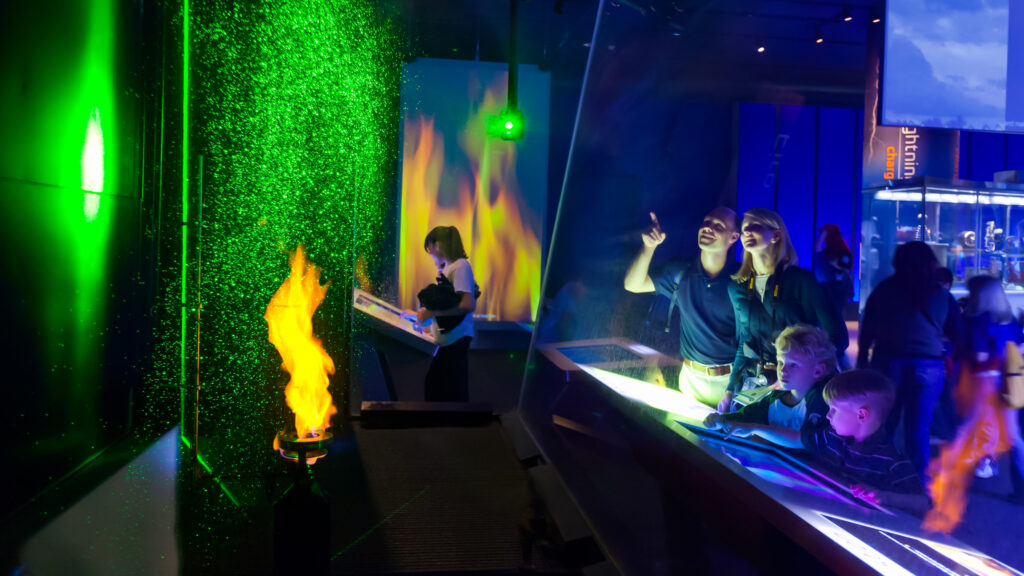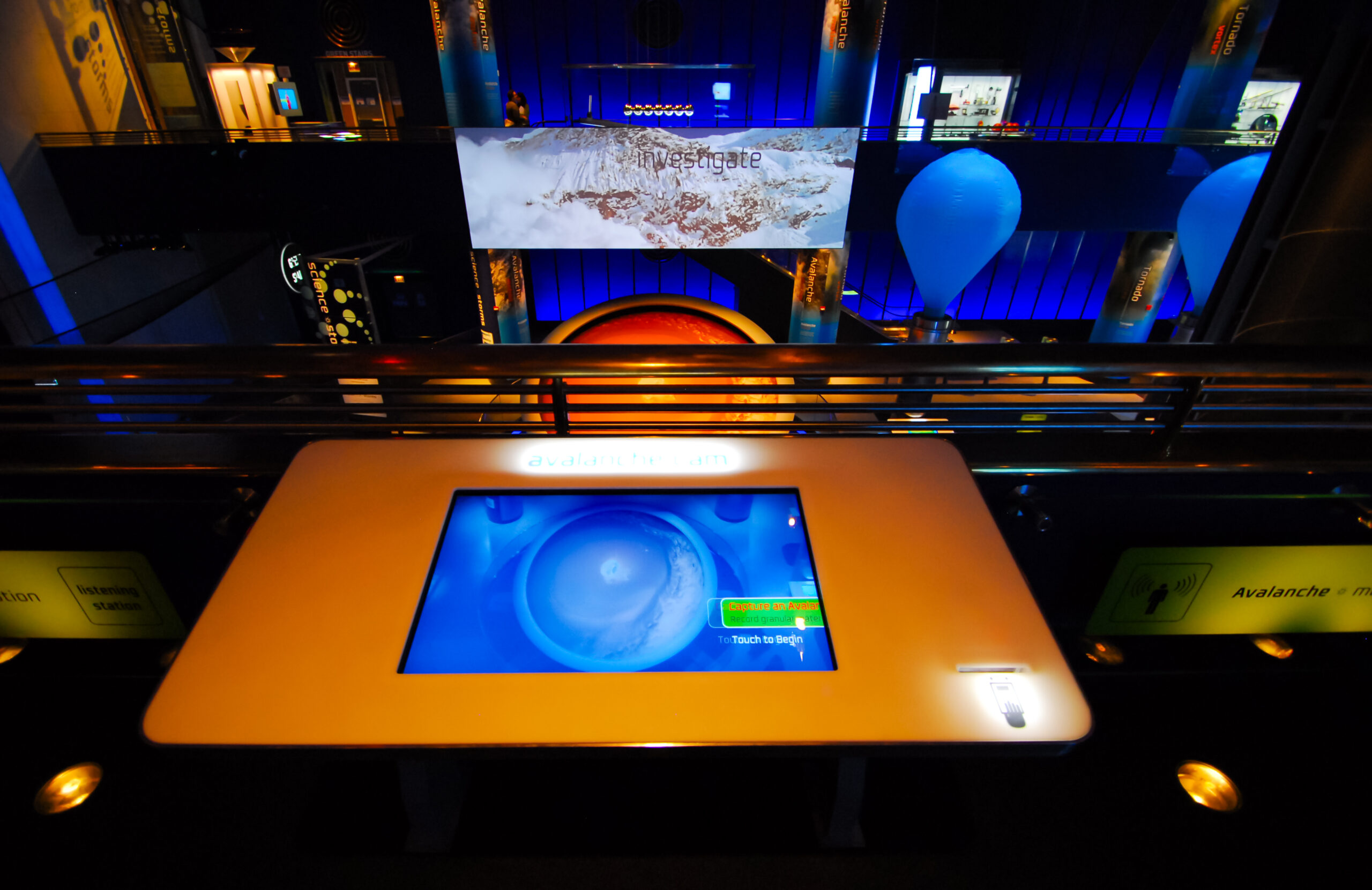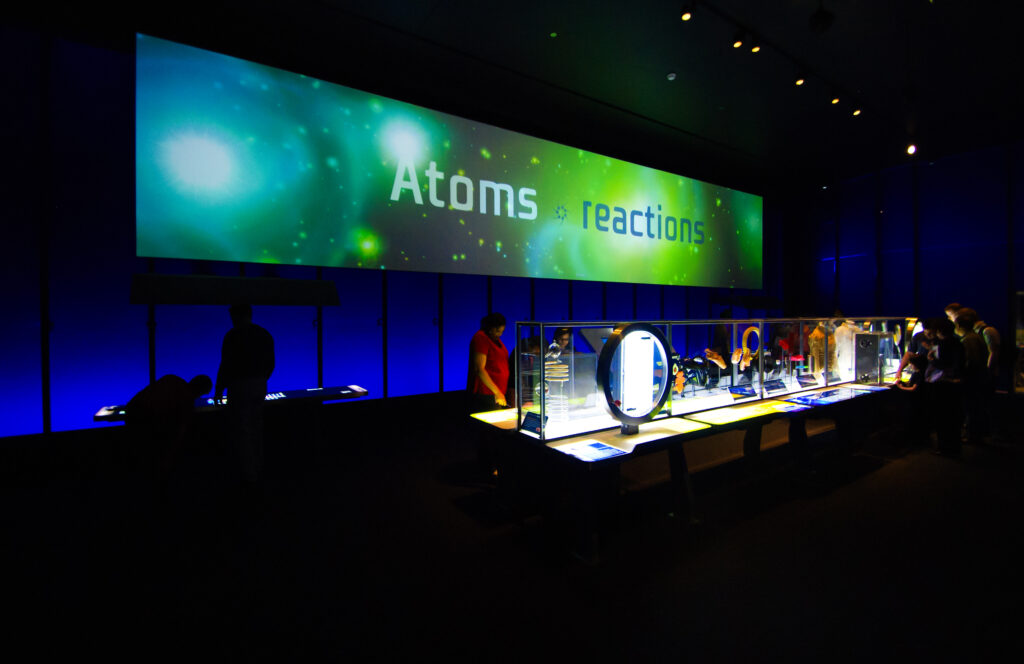Science Storms, Museum of Science & Industry
Mad Systems was delighted to collaborate with Evidence Design on Science Storms, a multi-award-winning permanent exhibit at the Museum of Science & Industry in Chicago, IL. Spanning an impressive 26,000 square-foot exhibit space, this exhibit invites visitors to explore the science behind nature’s most powerful phenomena, such as tornadoes, lightning, and fire. From there, they can learn the chemistry and physics that drive these events and witness the creation of an actual tornado.
Mad Systems provided a traditional AV installation encompassing over 50 exhibits. This expansive space is highlighted by seven large-scale interactive demonstrations that delve into natural phenomena alongside numerous smaller experiments. Interactive and linear media are integrated throughout the venue to complement the mechanical exhibits. These include large-scale video presentations that feature stories from scientists studying these natural events, adding a human element to the marvels on display.
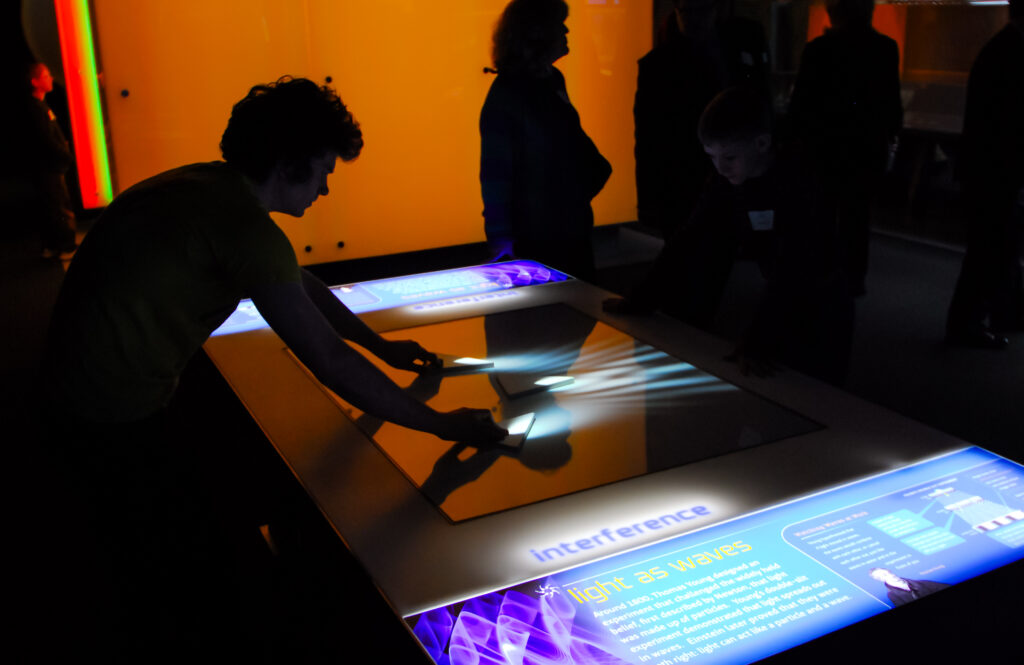
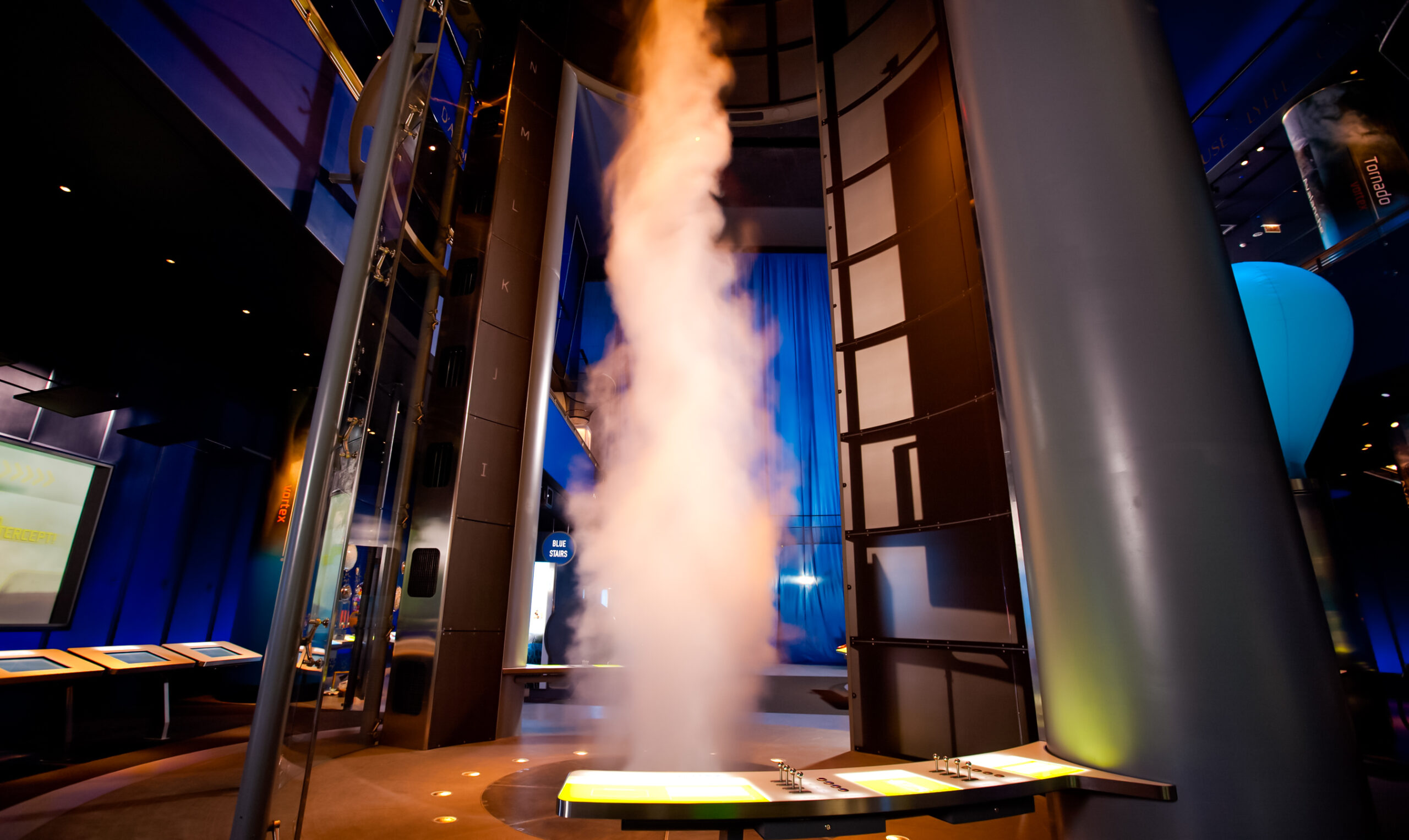
Science Storms has captivated countless visitors for over a decade with its hands-on experiments and visual demonstrations. This exhibit hall continues to ignite curiosity about the natural world and the fundamental scientific principles that govern it, proving to be a cornerstone in the museum’s mission to inspire the next generation of scientists and explorers.
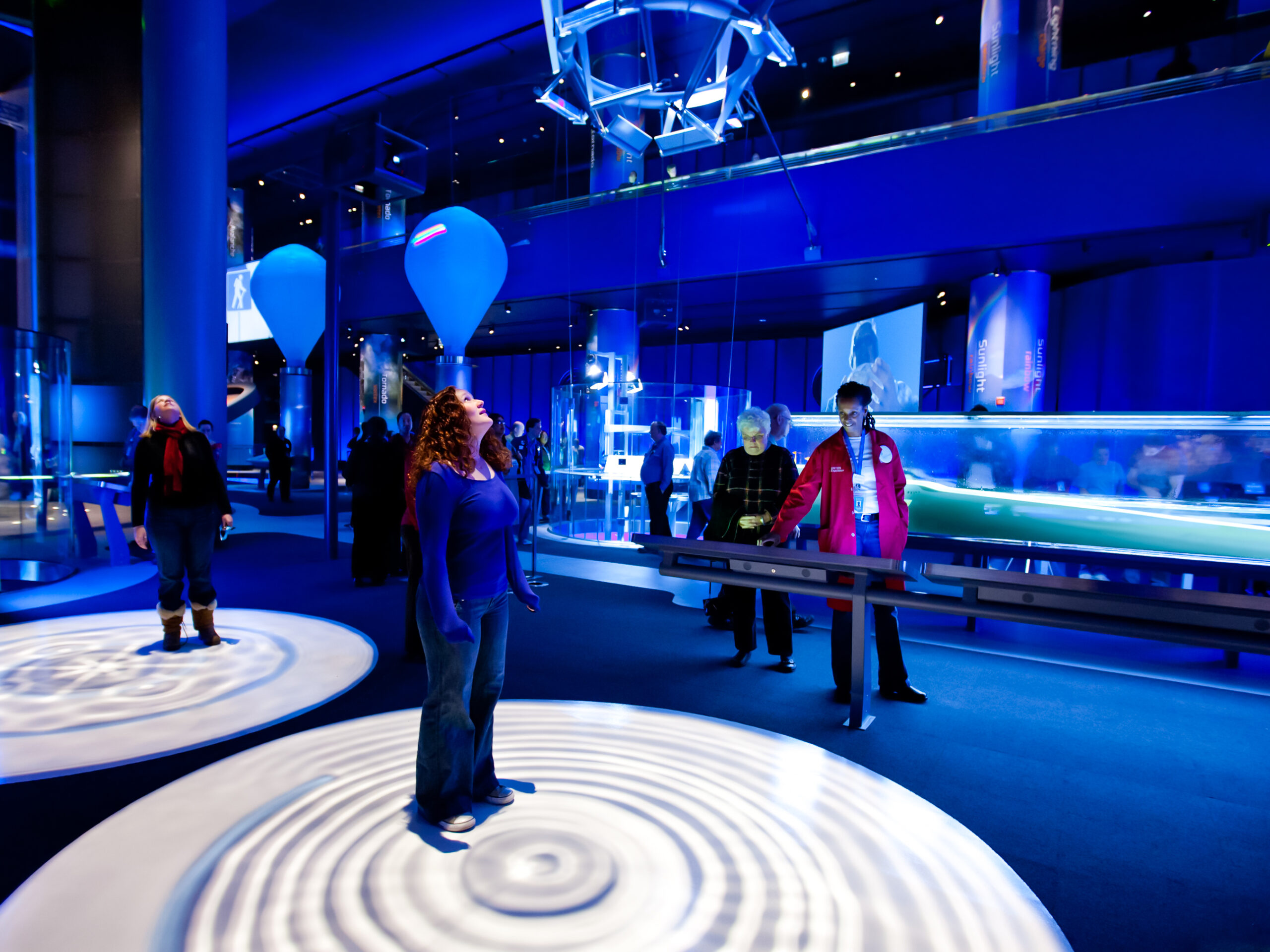
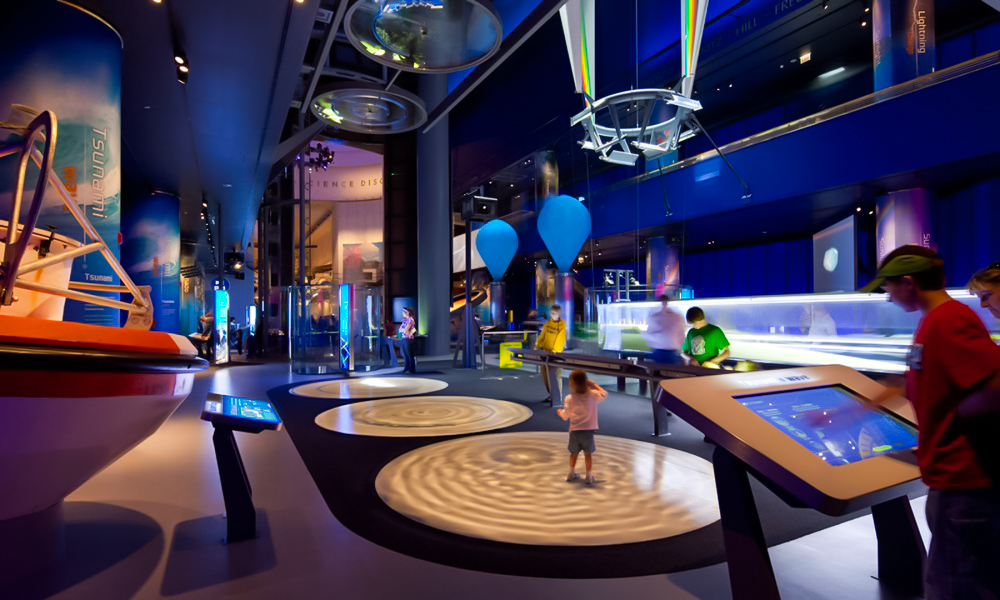
A unique challenge for Mad Systems was managing audio bleed in an open gallery with no walls. The team was involved with the design of the space in very early stages and was able to ensure precise speaker placement to create an optimal solution for eliminating any significant sound overlap using psycho-acoustic design methods. This careful planning allows each audio element to be heard clearly without interference, enhancing the immersive experience.
For the open Lightning theater, Mad Systems installed speaker drivers within the seatbacks so the seats became speakers. Once the audio signals were balanced, this innovative solution ensured that while the main show ran, visitors could enjoy clear audio from opposing screens while others engaged in a nearby audio interactive without disruption.
